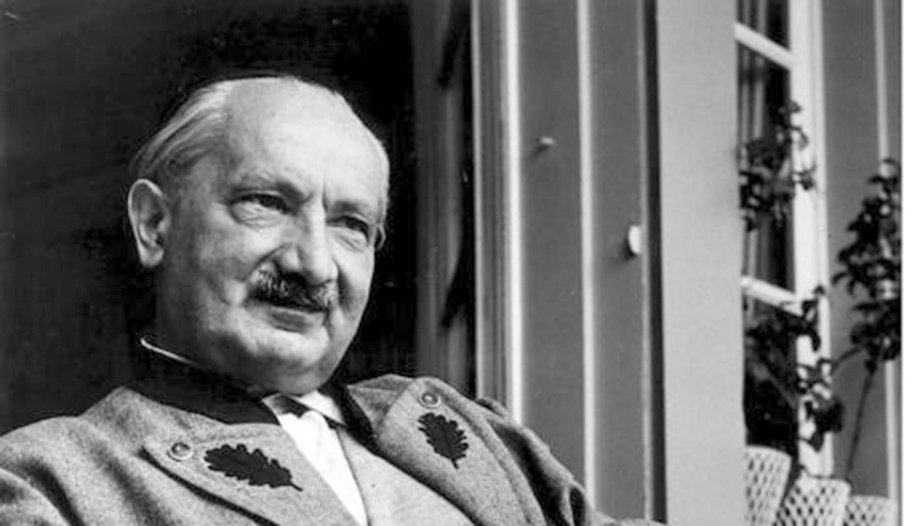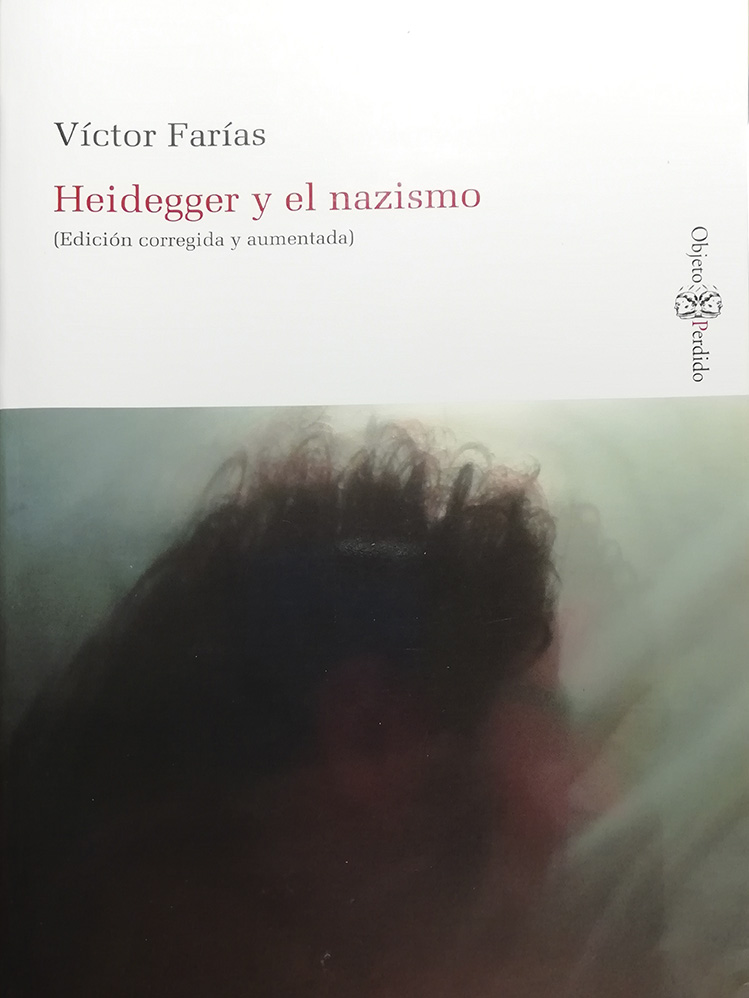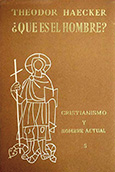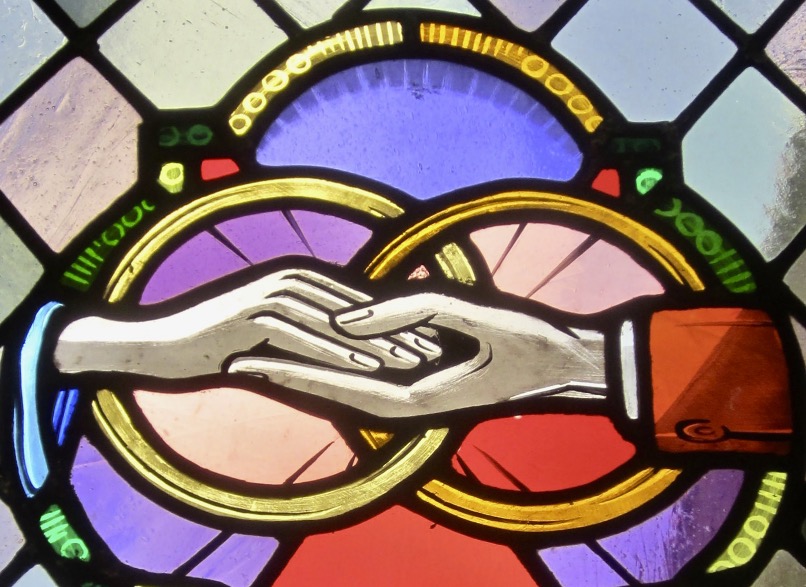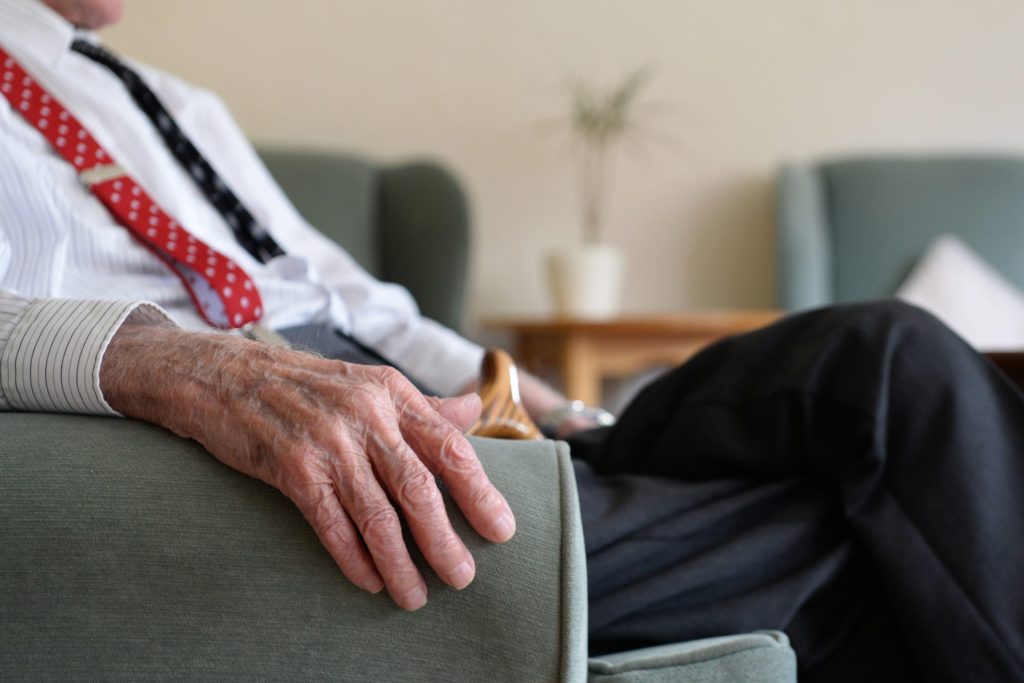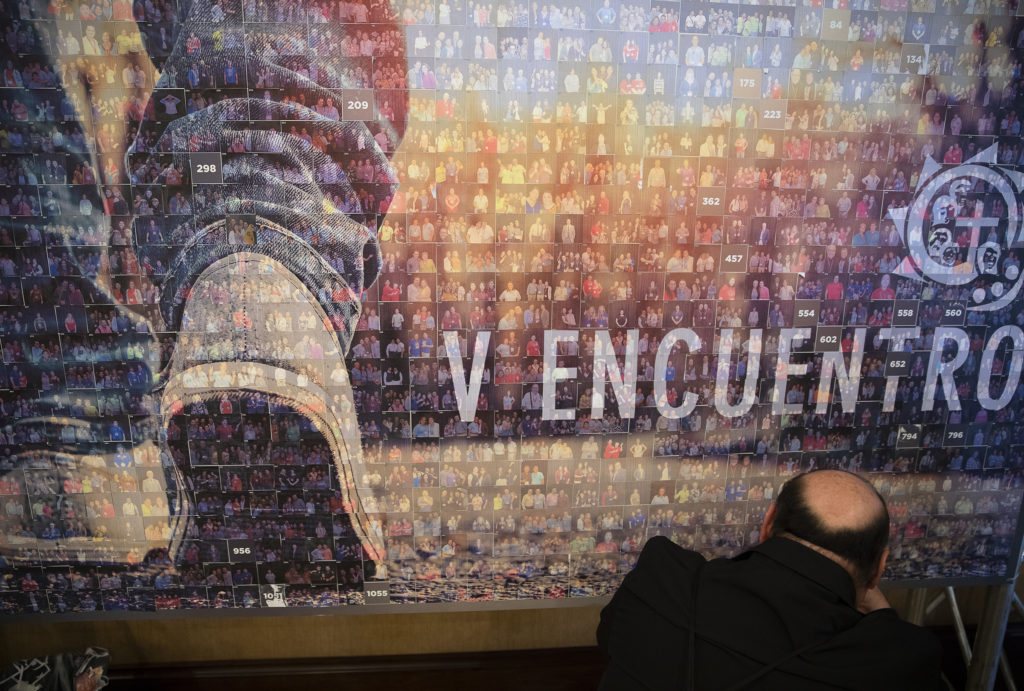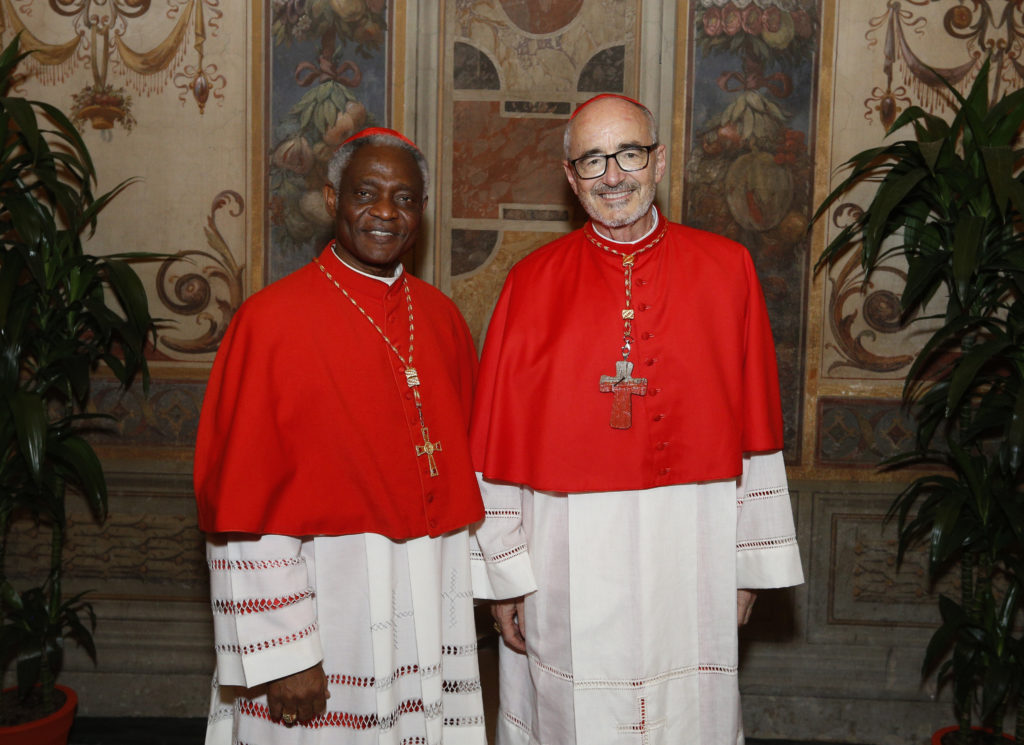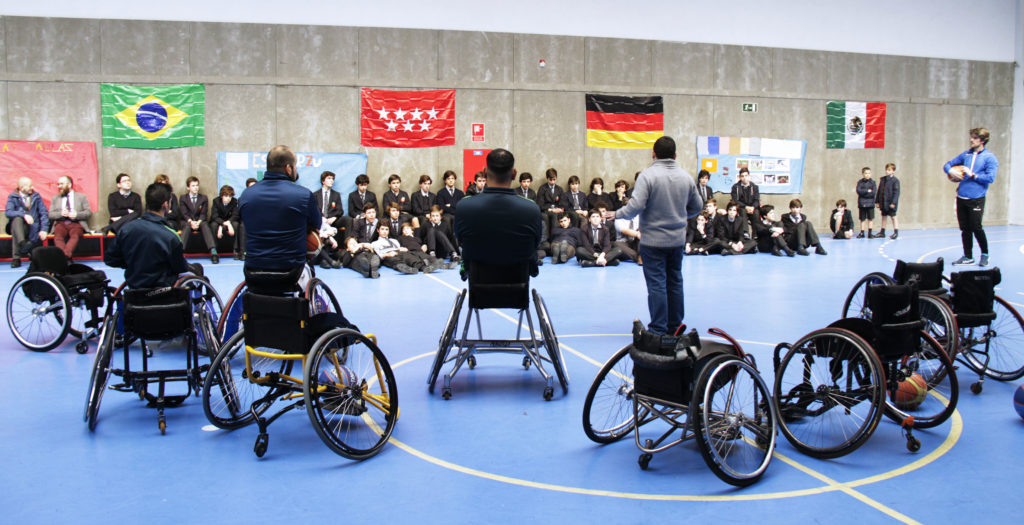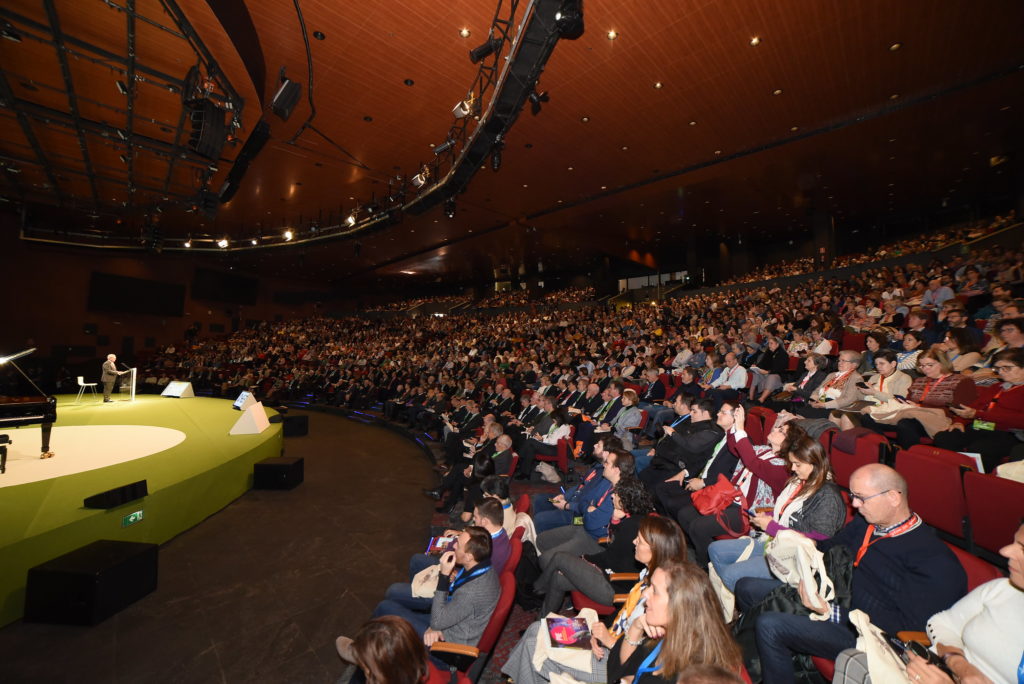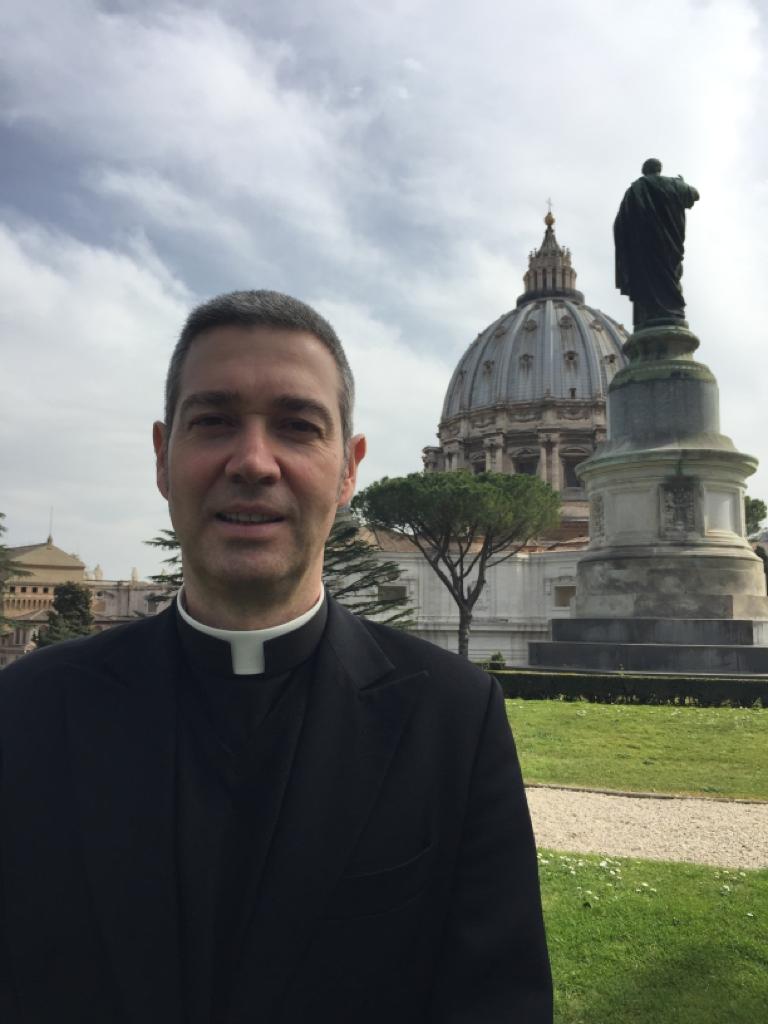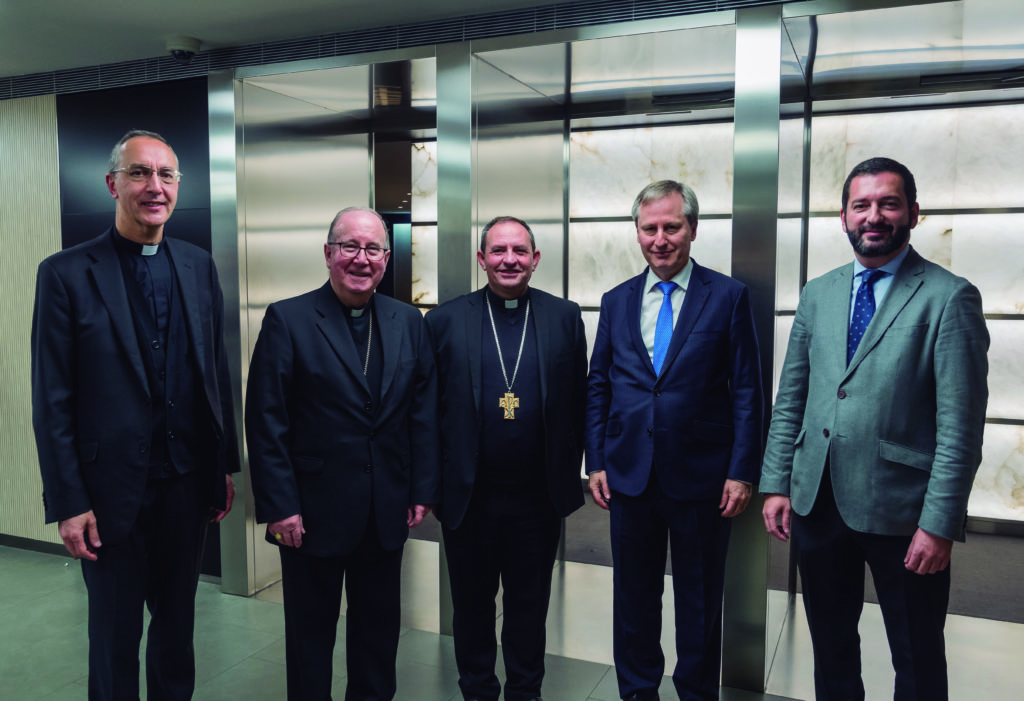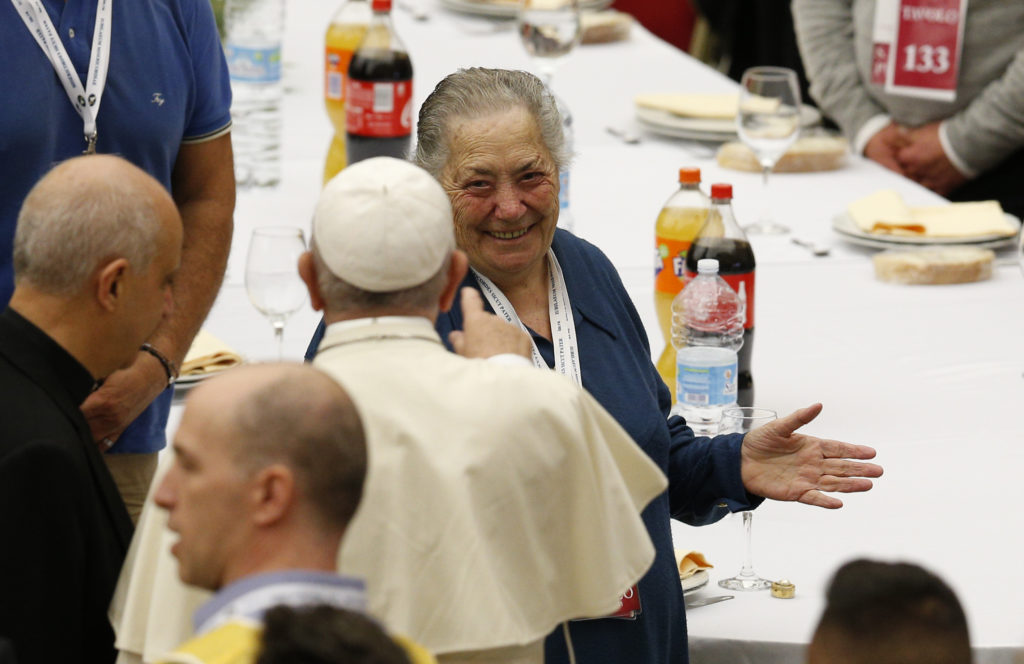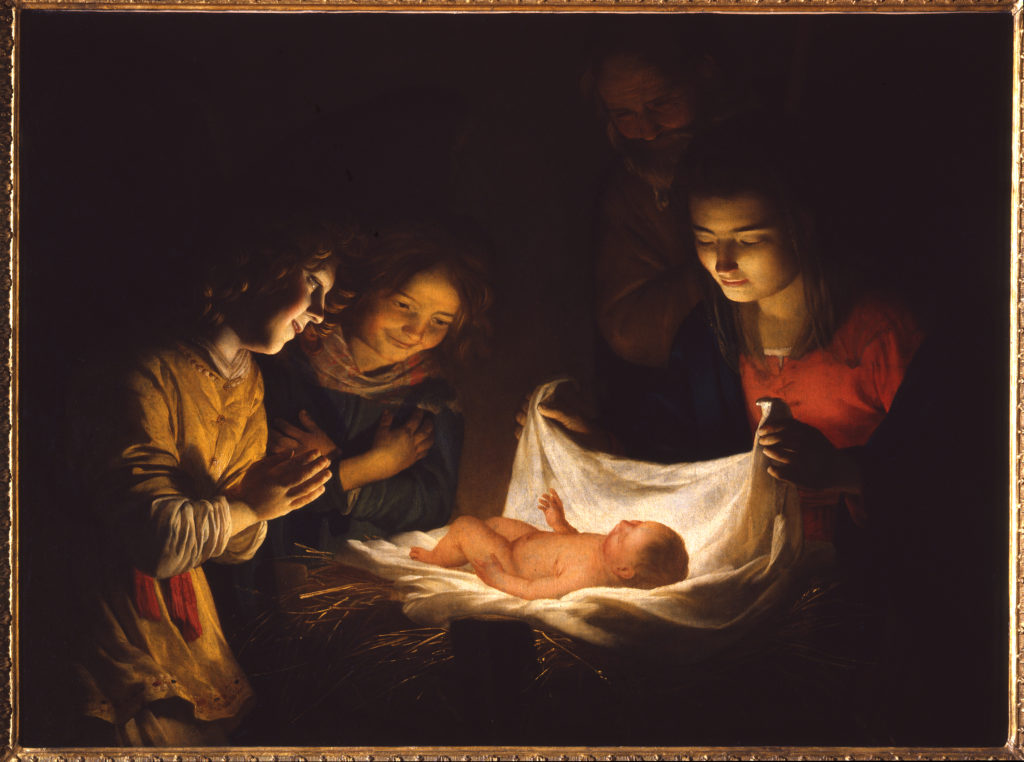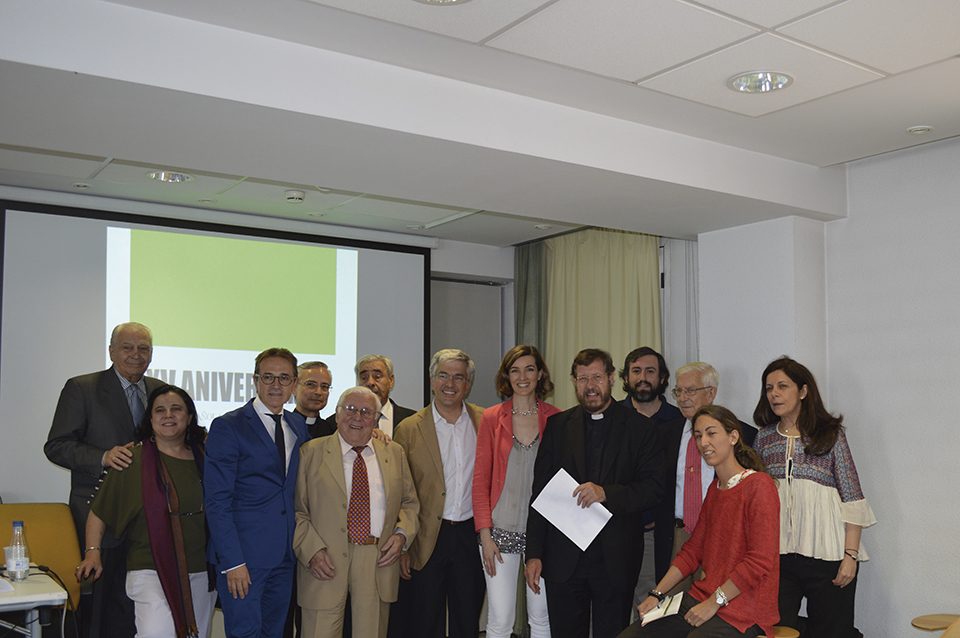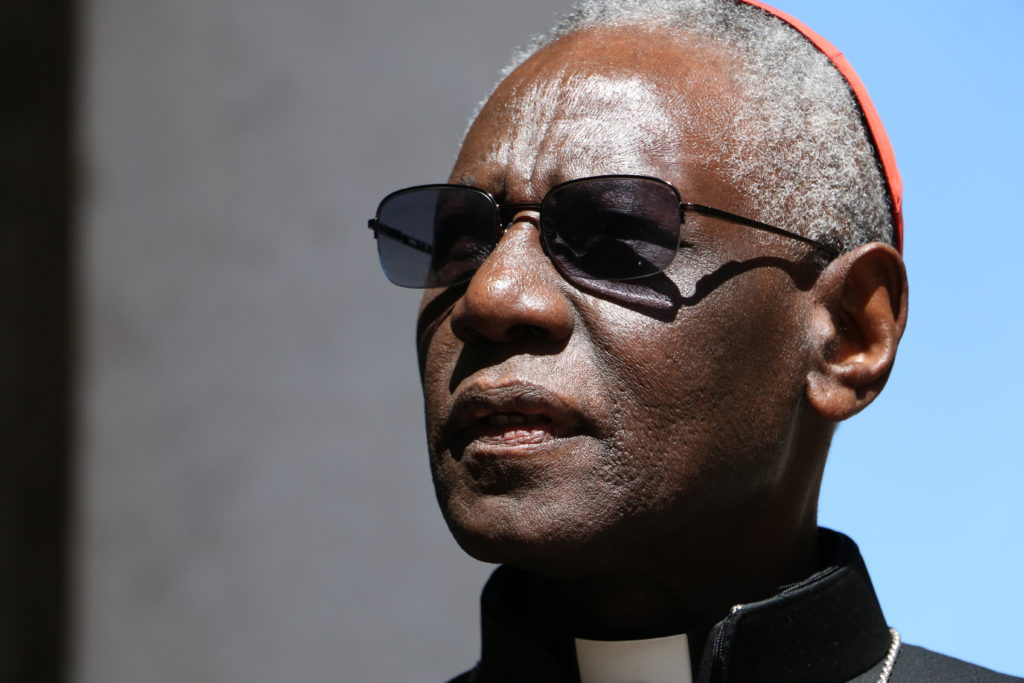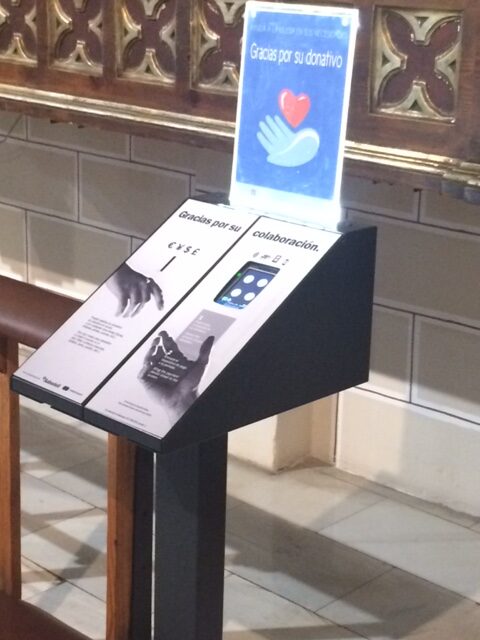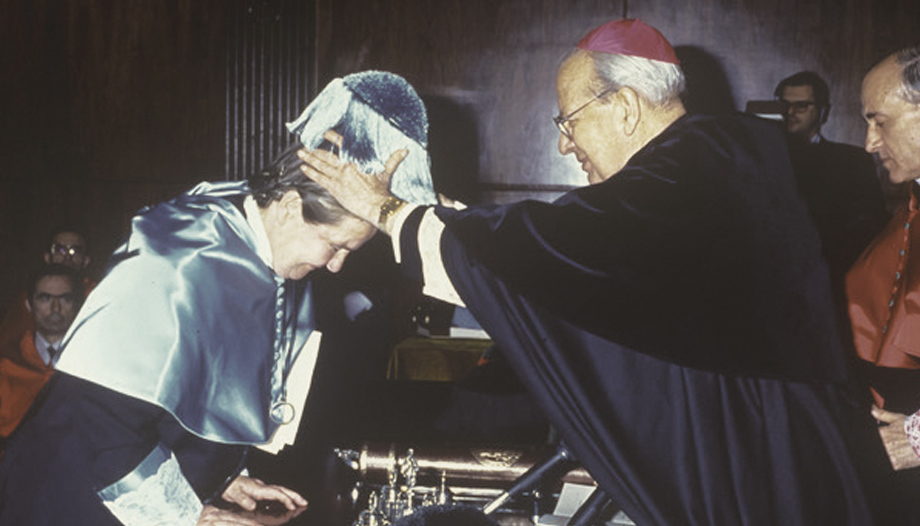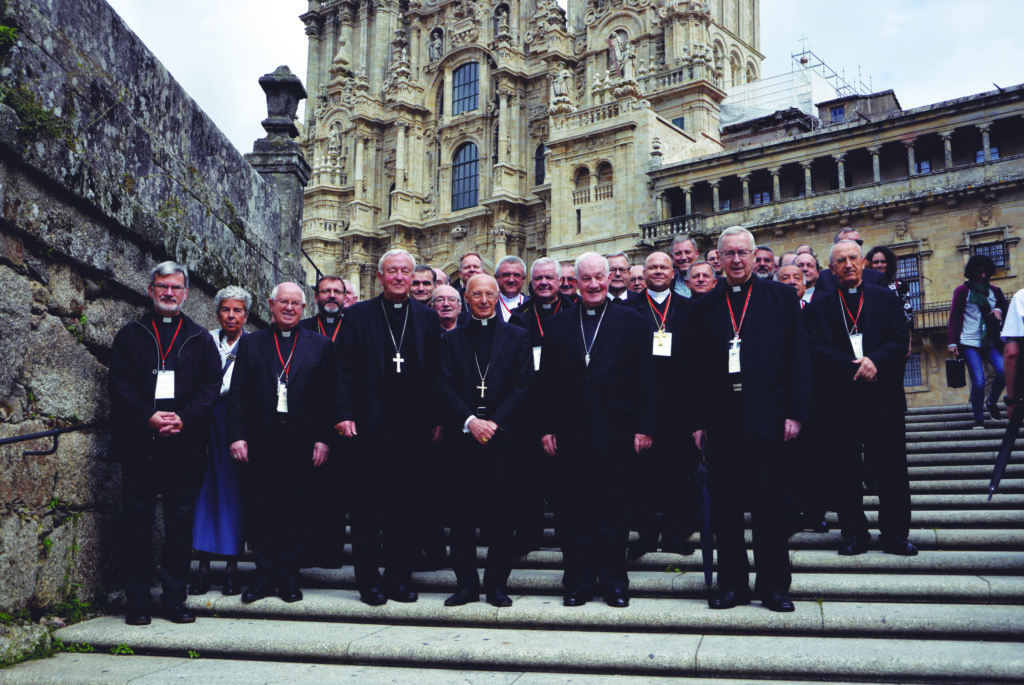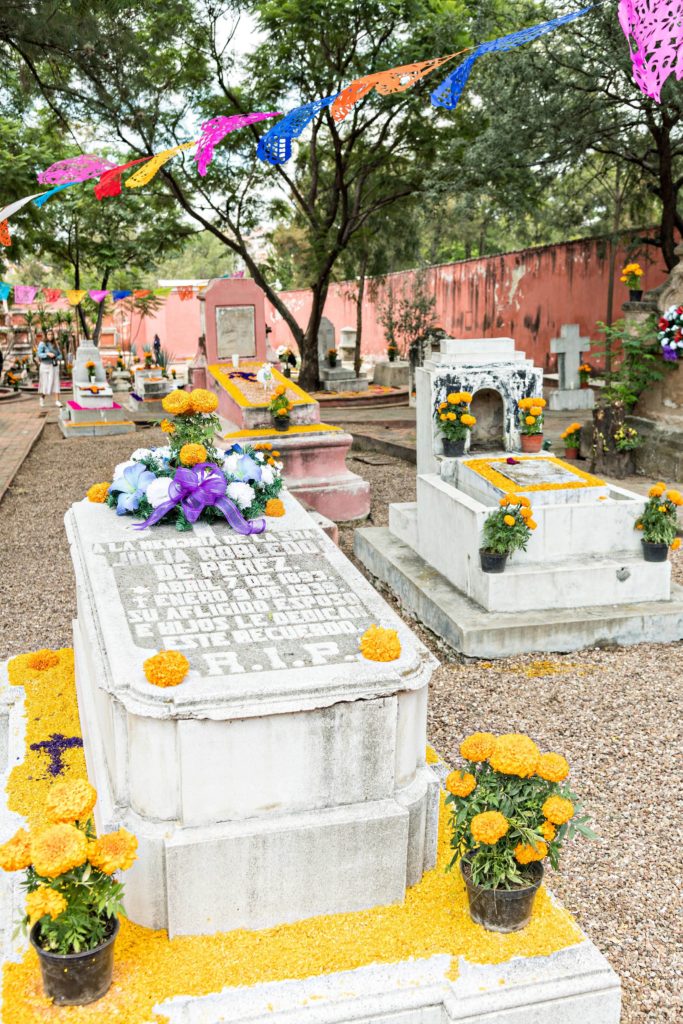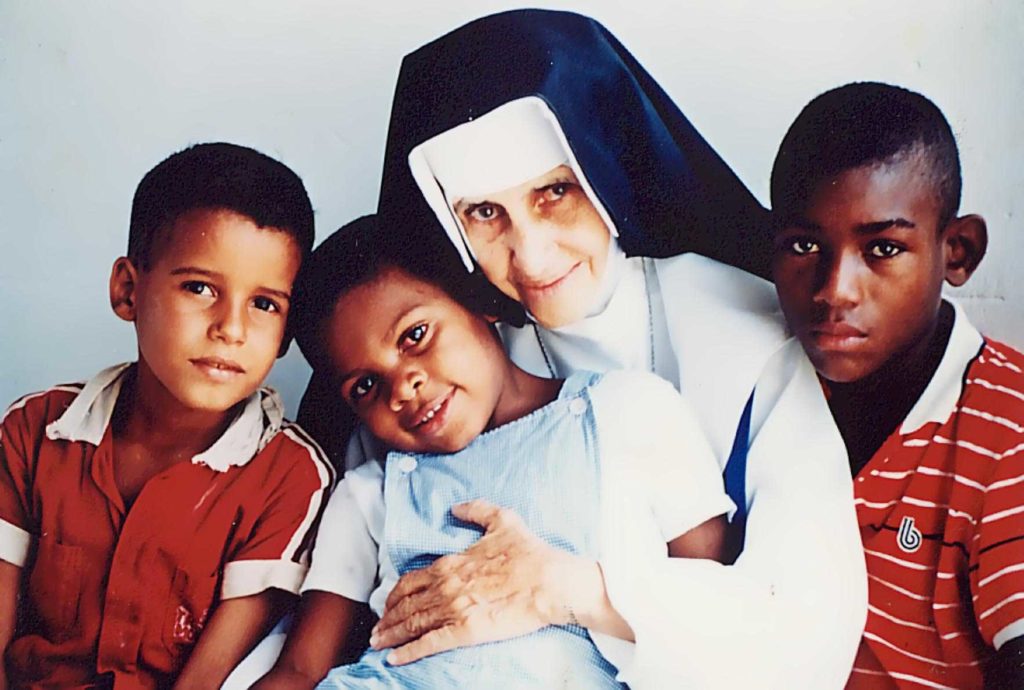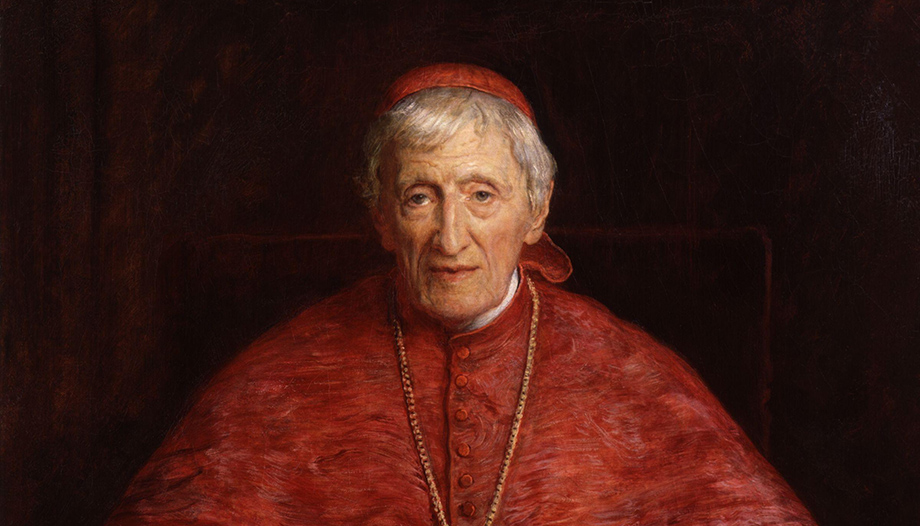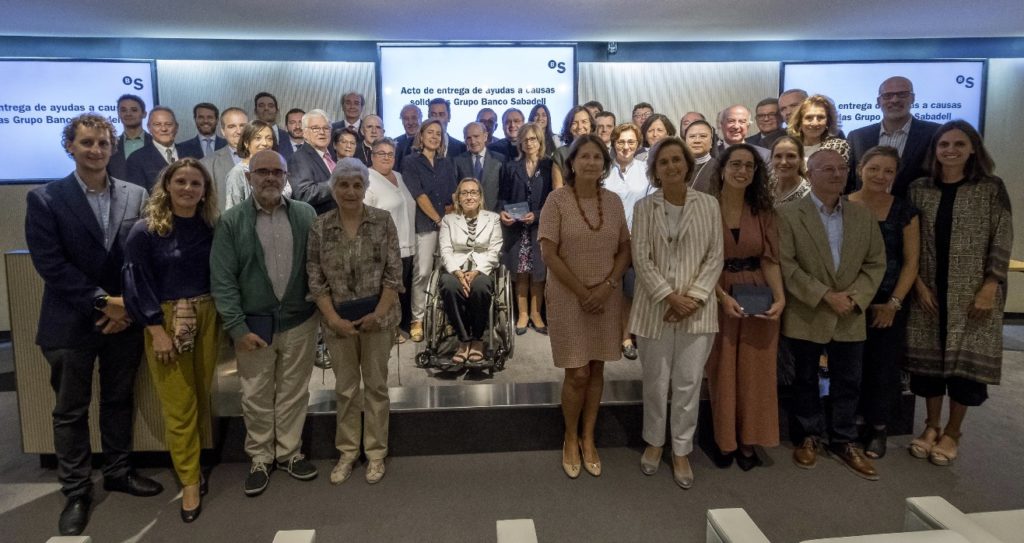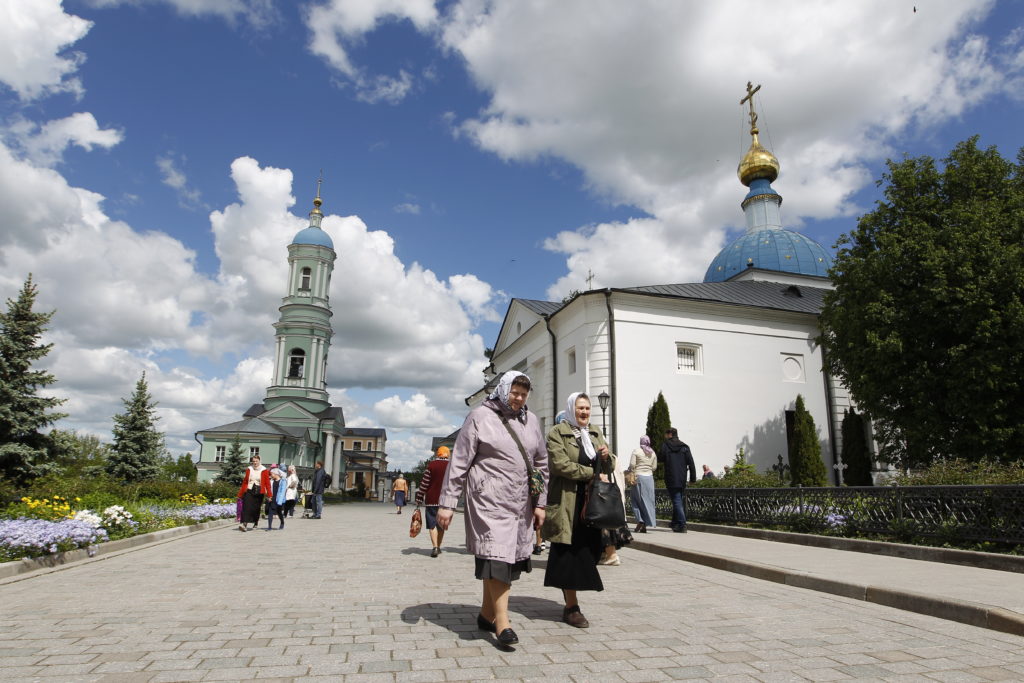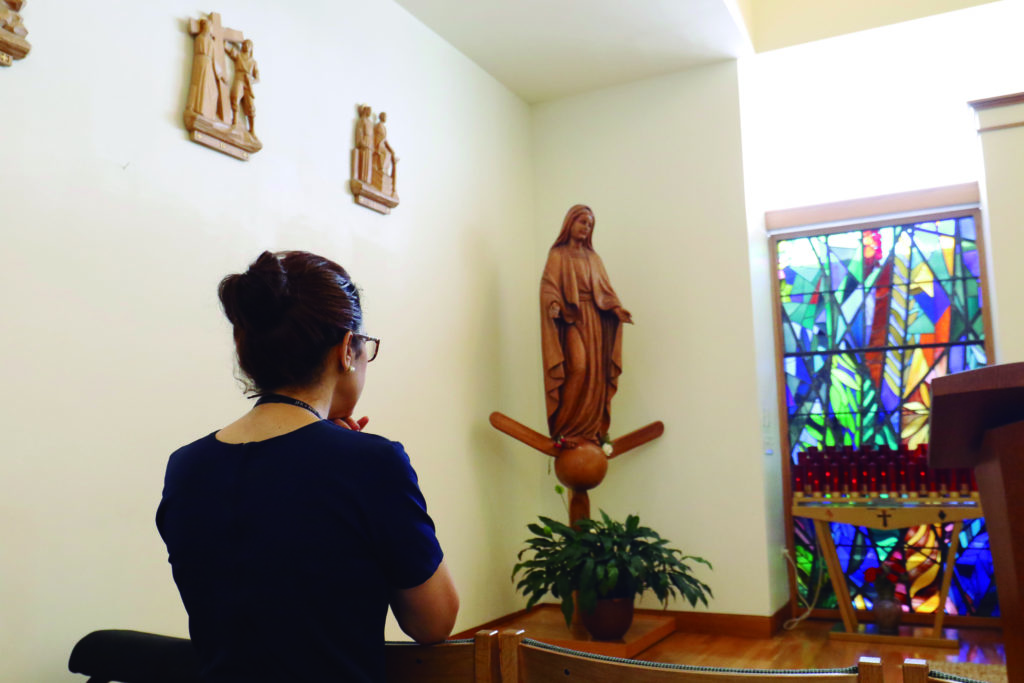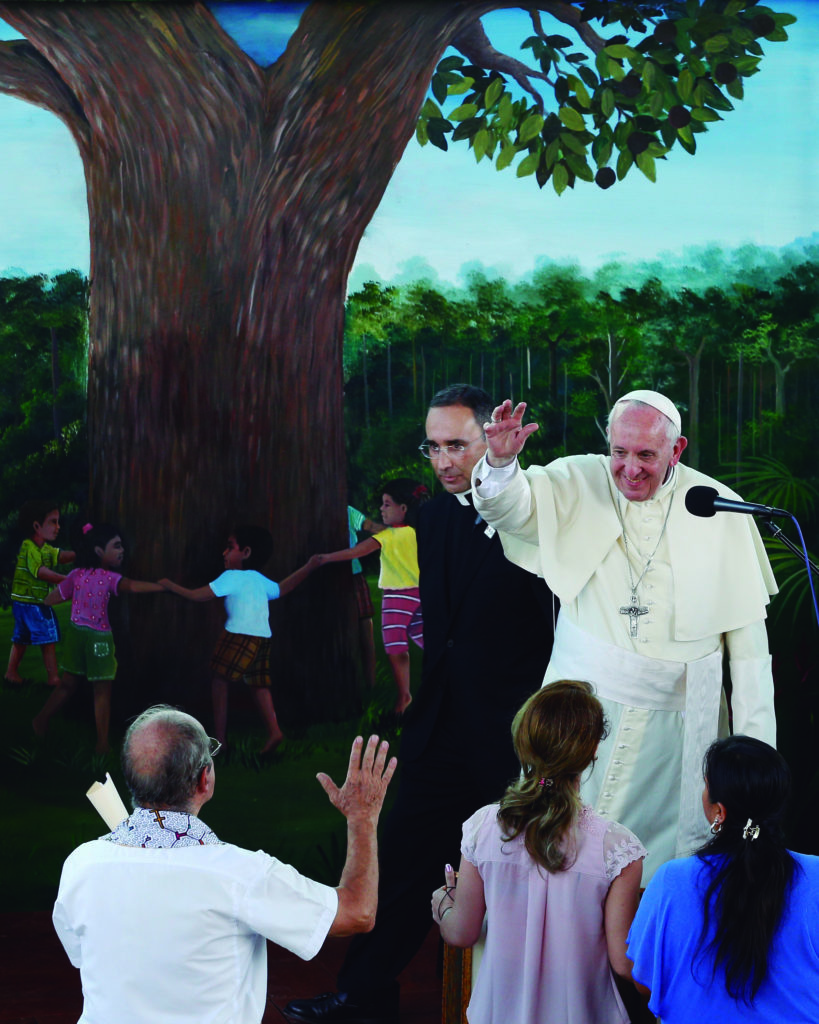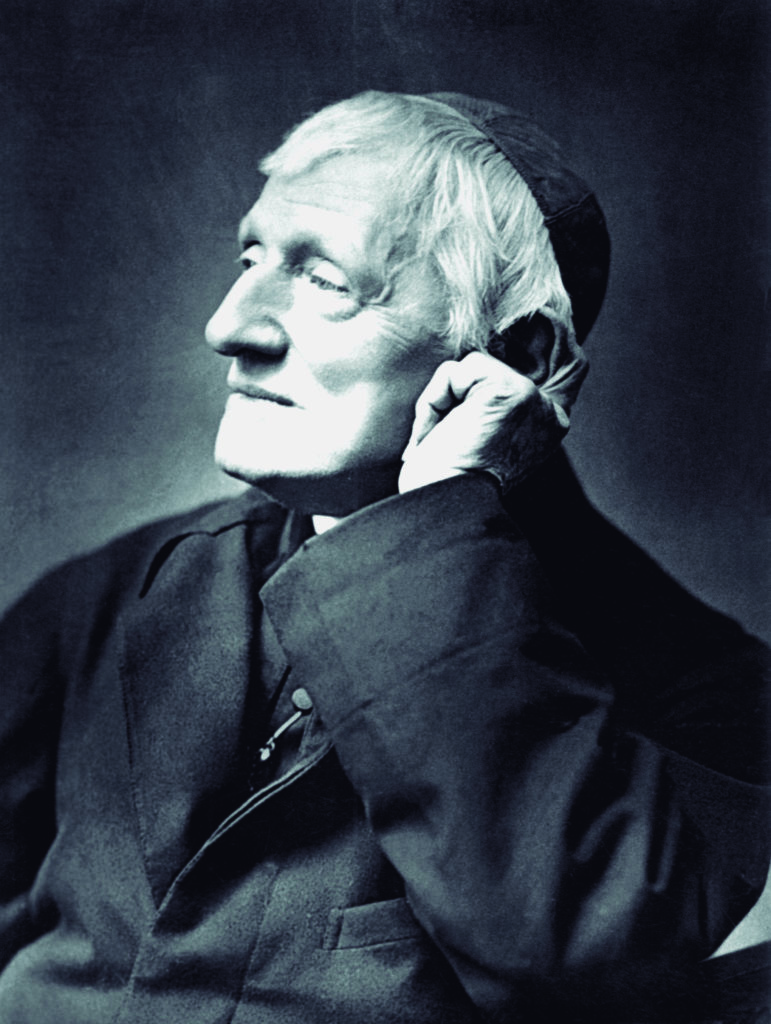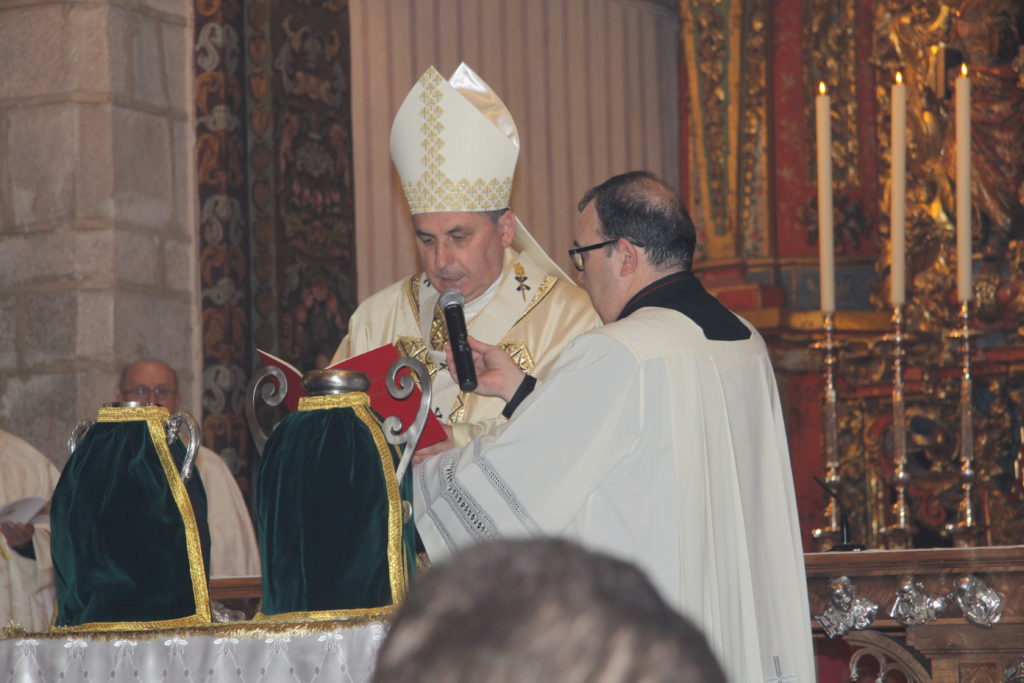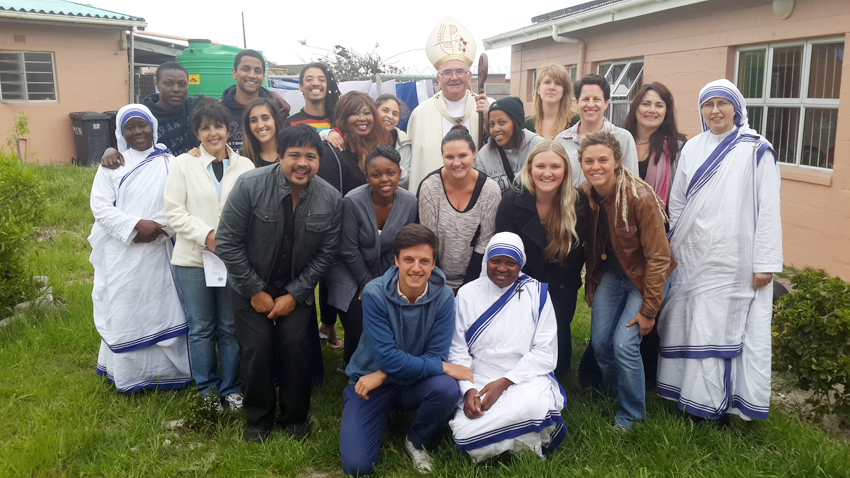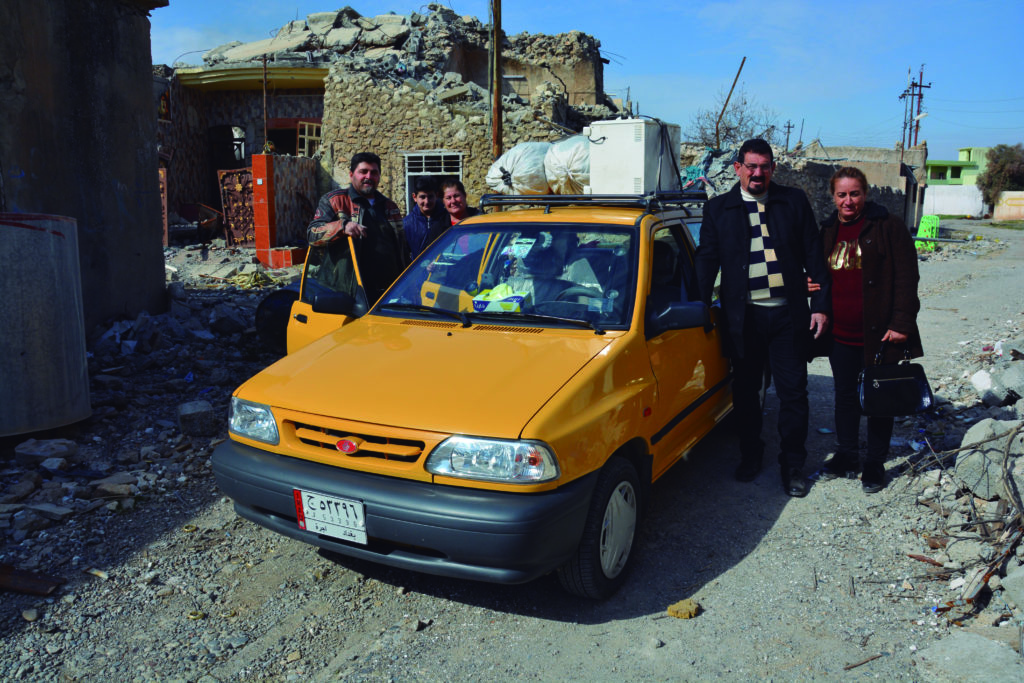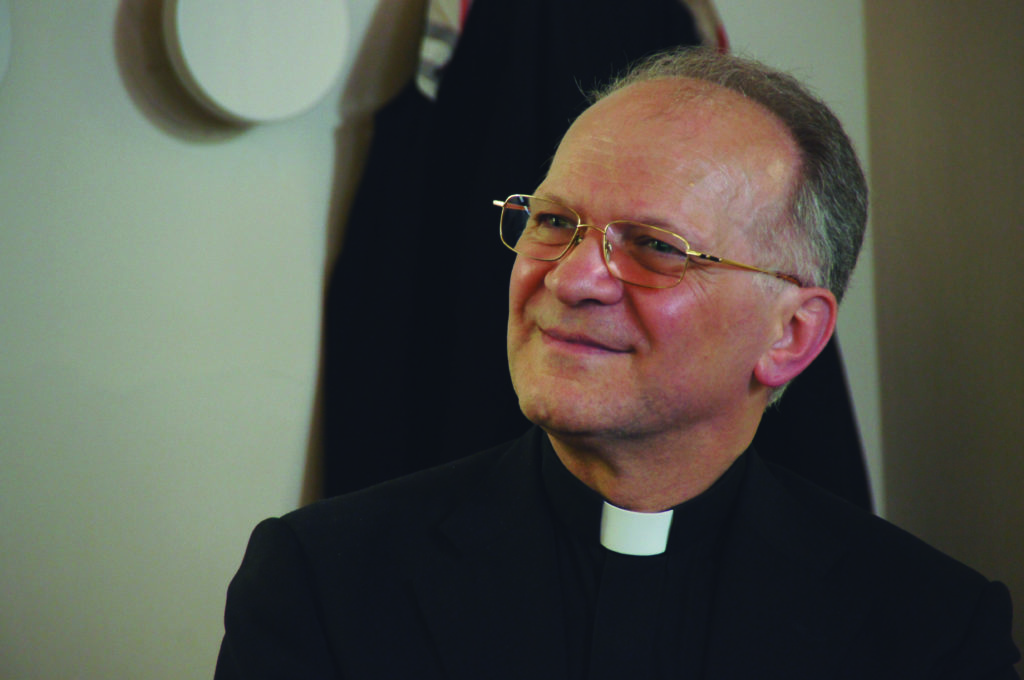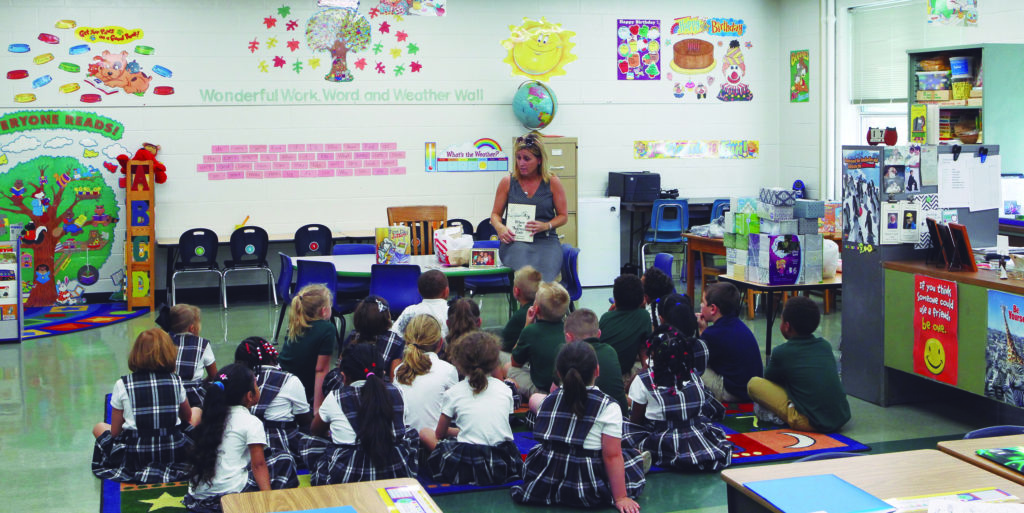It also indicates the role that the Church played and still plays in overcoming the consequences of "apartheid", and the current challenges, in line with the Pastoral Plan recently approved by the bishops.
-The "Vicariate Apostolic of the Cape of Good Hope" was created 200 years ago.
But the Catholic faith has been present in South Africa since the 15th century....
The Catholic
The Catholic Church in South Africa celebrated in 2018 the bicentenary of its official
official establishment. Its first presence dates back to the Portuguese explorer Bartholomew Diaz, with whom
Portuguese explorer Bartholomew Diaz, with whom missionaries traveled, celebrated the first Holy Mass on "Holy Cross Island", as Diaz
Mass on the "island of the Holy Cross," as Diaz called it, in front of the present-day city of Port Elizabeth.
city of Port Elizabeth. About ten years later, Vasco de Gama rounded the "Cape of Storms" or "Cape of Storms".
of Storms" or "Cape of Good Hope", also accompanied by missionaries.
On Christmas Day they sighted land and named it "Tierra de Natal" (Christmas Land);
Today it is known as KwaZulu-Natal. But we do not know of any evangelistic activity in South Africa.
evangelistic activity in South Africa.
At
1652 the Dutch company East India took control of what is now Table Bay and Cape Town. Because of religious tensions in Europe, especially in
Europe, especially in Holland, Catholicism was banned in the Cape, and was also banned after the period of Dutch rule.
was also banned after the period of Dutch rule. When in 1795 Cape Town
the prohibition of Catholicism was maintained, and only a few missionaries were allowed to enter the
only a few passing missionaries were allowed to enter on French or Portuguese ships.
Portuguese ships. The Dutch recaptured the Cape and introduced religious toleration in 1804, but two years later
religious tolerance in 1804, but two years later the British returned and banned the Catholic Church again.
the Catholic Church again.
Until
1818 it was not possible to appoint a Vicar Apostolic. It was Pius VII who
appointed Bede Slater OSB, who had not set foot in South Africa and could not do so because he was prevented by the British government.
British government; he was to settle in Mauritius, where he was also Administrator Apostolic.
Apostolic Administrator. His successor, William Morris, also resided in Mauritius and never set foot on South African soil.
and never set foot on South African soil. Finally, in 1837, the third Apostolic Administrator,
Bishop Raymond Griffith OP, was able to reside in Cape Town, from where the Church began to expand.
began to expand.
It is
It is important to keep these beginnings in mind, because for much of South Africa's history, in a sense, the Catholic Church has been the "Church".
South Africa's history, in a sense the Catholic Church has been the "unwanted Church" with a minority mentality.
unwanted," with a minority mentality. As Calvinism marked the beginning of Christianity in
Christianity in South Africa and maintained its dominant position up to the apartheid era, Catholicism
apartheid, Catholicism has been "under suspicion," and more "tolerated" than accepted.
accepted.
A
Despite these origins and the relative youth of the Catholic Church in this country, its growth has been impressive.
the Catholic Church in this country, its growth has been impressive. There are 26 dioceses, five of them archdioceses, and hundreds of parishes throughout the country.
archdioceses, and hundreds of parishes throughout the country. The Catholic
Catholic population is about 3.4 million people, about 6.5 % of the total of about 52 million; and there are more than
of about 52 million; and there are more than 350 Catholic schools: fewer in fact than in the past, because apartheid introduced
because apartheid introduced "Bantu education" in the 1950s and cut off food funding for the
cut funding for food for blacks in Catholic schools in the 1950s. Despite
Despite the valiant efforts of those who led the Church at the time and the generous financial
generous financial support from the international community, many of our schools had to close.
schools had to close. Then all the Catholic hospitals had to close as well, because the Church did not
because the Church was unable to cope with rising medical costs and the need for specialized equipment.
medical costs and the need for specialized equipment. Nevertheless, during the HIV/AIDS crisis
the HIV/AIDS crisis that started in the 1980s, after the government, it was the Catholic Church, with its programs and
the Catholic Church, with its programs and clinics, has been the largest provider of services for those affected and infected by HIV/AIDS.
for those affected and infected by the virus. In the apartheid era, the
Catholic Church was well known and respected by the majority of the population for its rejection of injustice and injustice.
its rejection of injustice and racial discrimination. For example, in the 1970s
In the 1970s, for example, nuns opened so-called "white schools" to all races, in defiance of the
in defiance of the government and risked closure and, of course, imprisonment.
imprisonment.
The role of religious congregations, especially of women religious, in most of the
congregations, especially women religious, in most aspects of this historical process and in the growth of the Church.
aspects of this historical process and in the growth of the Church. Their courage, charism and perseverance have been an example to millions of people.
millions of people. The forced closure of Catholic hospitals and of many schools is not a sign of a
schools is not a sign of a shutdown, but only that times and needs are changing.
needs are changing. The Church today is vibrant, young and fervent in its hunger for God.
for God.
-Missionaries have played a major role in South Africa. What is the need and presence of the mission today?
the need and presence of the mission today?
I am
surprised to hear that the time of the missionaries has passed. South African Catholics
South African Catholics are deeply grateful to the many missionaries who evangelized, and continue to evangelize, our country.
evangelized, and continue to evangelize, our country. We are still in need of missionaries
still need missionaries today, though perhaps in a different way.
There are
two congregations that stand out for their historical influence. The Oblates of
Mary Immaculate arrived in 1852 in KwaZulu-Natal. Their founder, Bishop Eugene de Mazenod
Eugene de Mazenod, insisted that they focus on the evangelization of the Zulu "heathen" rather than those who were far from the faith.
the "heathen" Zulus, rather than those far from the faith. Until 1860 there were no conversions
among the Zulus, but in 1862 Bishop Allard OMI and Bl.
Joseph Gerard OMI arrived in Lesotho and there was "an explosion of God's merciful grace" which was the basis of the Zulus' conversion.
of God" that was the basis of the dynamic and fruitful Church of Lesotho. Secondly
secondly, mention must be made of the Mariannhill Missionariesorder created by Trappist monks
by Trappist monks sent to South Africa in 1880. Upon their arrival they went to what was called the "Vicariate of the Eastern Cape" (now Port Elizabeth) and two years later
what was called the "Vicariate of the Eastern Cape" (now Port Elizabeth) and two years later moved to what is now
two years later they moved to what is now Mariannhill, near Durban. Within five
years it would become the largest Trappist abbey in the world.
Directed by Abbot Franz Pfanner
by Abbot Franz Pfanner, they soon realized that the austere and ascetic life of the Trappist monks would not meet the needs of the local population.
the austere and ascetic life of the Trappist monks would not solve the needs of the local population, in particular the need for education of the black population.
the needs of the local population, particularly the need for education of the black population. They therefore founded schools
and started various programs to equip young people with skills in carpentry, animal husbandry or
carpentry, animal husbandry or agriculture. In 1909 they separated from the Trappist order.
Trappist order. The essential factor in their success in evangelization - the region surrounding
region surrounding Mariannhill now has the highest proportion of Catholics in the country - was to recognize the needs of their time.
the needs of their time; the response they offered became their mechanism of evangelization.
of evangelization.
At
my opinion, the most relevant thing is that the "mission" does not end. Its nature and characteristics may change
its nature and characteristics, but the Church will always be missionary through Baptism.
Baptism. Obstacles to the mission appear when there is no flexibility to adapt to the "signs of the times" and when we think
to adapt to the "signs of the times" and when we think of past successes as the only way to "be
past successes as the only way to "be Church". The first missionaries - the congregations
congregations and many others - bore so much fruit because they responded to the needs of the people they served.
the needs of the people they served, such as the need for education or health and a deep spiritual hunger.
health and a deep spiritual hunger. These were their "entry points
in the proclamation of the Gospel. Congregations like the Scalabrinians continue to evangelize because they see the needs of the people they serve.
evangelizing because they see the needs of the people; in their case, of migrants, refugees and seafarers.
migrants, refugees and seafarers.
One
one of the greatest dangers to evangelization is to be satisfied with what has worked in the past and lack the dynamism
what worked in the past and lacking the dynamism necessary to understand and appreciate a changing world, without having the courage to "put out into the deep" in a sea that is changing.
a changing world, without having the courage to "put out into the deep" in a sea that can be unsafe and hostile.
and hostile sea. Some "signs of the times" pose a great challenge: sexual abuse of minors by clergy.
sexual abuse of minors by clerics, migration and refugees,
secularization, life issues. The missionary challenge is to accept
that these signs "shape" our ministry, and that we have to offer responses with concepts and words that make sense.
and words that make sense to people, without diminishing or adulterating in any way the
diminish or adulterate the Gospel in any way.
-Among Catholics, does any race or social sector predominate?
The
Christianity represents about 80 % of the population. About 6.5 %
are Catholics, or about 3.4 million people. The largest number of
Catholics are found in the Zulu areas evangelized by the first brave missionaries of the local population, the Zulus.
missionaries of the local population, the Oblates and the Mariannhill missionaries.
Approximately
80 % of South African Catholics are "black"; about 300,000 are "colored" (i.e., mixed race); and about 300,000 are "white".
(i.e., of mixed race); and about 300,000 are "white". Needless to say
that this racial classification is absurd, since any DNA test will show that each individual
in each individual a wide range of ancestors. Perhaps the most important thing to note is
that the highest prevalence of Catholicism is among poor people: those who were once discriminated against and continue to struggle
discriminated against and continue to struggle economically.
-You have been an "observer" at the recent elections, the sixth since the end of apartheid and the second since Mandela's death.
the end of apartheid and the second since Mandela's death. Is the system born in 1994 consolidated?
the system born in 1994 consolidated?
I have
been an election observer on several occasions, at different levels. The last
elections -for the national government- have been different, in the sense that, for the first time since 1994
that for the first time since 1994 it seemed that they could be overshadowed by political violence.
political violence. There has been plenty of it in KwaZulu-Natal, and strangely enough, mostly among members of the ruling party, more
between members of the ruling party, rather than between different political parties.
different political parties. There were persistent rumors that violence could even block them in some places.
block them in some places. This did not happen. There were difficulties - such as an alleged
alleged "double voting" in some places - but they went smoothly, peacefully and with good humor.
and in good humor.
No
I have no doubt that they were free and fair, and that the result reflects the will of the majority of voters.
will of the majority of the voters. I was an observer in the Cape Town area
Cape Town area, along with leaders of other religions, and we focused particularly on the polling stations that could be problematic, including the one at the
polling stations that could be problematic, including the one at Pollsmoor Prison.
Pollsmoor Prison. Apart from minor irregularities (such as one polling station that opened late) everything went well.
late opening) everything went well. There is no doubt that democracy is maturing in South Africa.
South Africa. We have freedom of speech and association, a free press and separation of powers, with checks and balances.
separation of powers, with mutual checks and balances. Informed readers
informed readers will know that we have been rocked by numerous corruption scandals, but these are being
corruption scandals, but they are being investigated: the Zondo Commission is investigating the corruption case
the corruption case known as "State Capture". The judiciary is free
and it works.
Even
We cannot consider ourselves satisfied, however, because it is evident that some want to undermine and "appropriate" the democratic processes.
want to undermine and "appropriate" democratic processes. It is a "battle
It is a "battle royal" that is being fought primarily between factions of the ruling party, and it will require determination and courage to overcome the forces that seem bent on destroying the democratic processes.
determination and courage will be required to overcome the forces that seem bent on destroying democracy and using it in the service of the ruling party.
democracy and use it in the service of their selfishness and greed.
A
Having said that, I think there is still a lot of work ahead to educate people on democracy, which means more than just voting every five years.
people in democracy, which means more than just voting every five years.
years. An important part is active participation in civic life and the ability to hold leaders accountable.
and the possibility of holding leaders accountable: perhaps that is what we need to continue to strengthen
to continue to strengthen the political education of the people.
Although
the system of racial discrimination has disappeared, there are still tensions. The
people tend to associate and deal with those who are similar to them, especially in terms of race.
race. It is also true that the huge rift between the rich and the poor in South Africa means that we can hardly say we can
and the poor in South Africa means that we can hardly call ourselves "one people".
people. If we do not reform the economy to make the situation more equitable, the future will
the future will be uncertain and there could be growing frustration and violence.
frustration and violence. There is an atmosphere of anger and hopelessness,
corruption and the lack of clear projects are weighing heavily. The economic
The economic situation is very serious: about a third of public spending goes to pay off the debt.
the debt. State-owned companies (such as Eskom, our electricity supplier) are heavily indebted and have
are heavily indebted, and have been mismanaged and dangerously mismanaged.
The current situation is unsustainable. There is a widespread impression (which
is largely true) that most of the wealth is still in the hands of whites, and the
in the hands of whites; and this prevents us from healing our racial past. The
fact is that millions of black people remain in poverty.
-What is the Church's contribution to the process of forgiveness and reconciliation?
reconciliation?
The Truth and Reconciliation
The Truth and Reconciliation Commission (TRC), which was set up by the government of national unity after the 1994 democratic elections
the government of national unity after the democratic elections of 1994, sought to bring healing and reconciliation to the aftermath of apartheid,
sought to bring healing and reconciliation to the aftermath of apartheid. It offered
those who had intervened in politics and committed human rights abuses during the freedom struggle
the opportunity to acknowledge their actions, in which case they could be granted amnesty,
in which case they could be amnestied for their crimes; and it provided for the possibility of compensation for the victims or their families.
compensation for victims or their families in certain cases. The TRC was
a great success, an essential factor in the transition to a full and free democracy.
democracy. Politically, it allowed the country to move forward, and it provided information to many people who did not know what had happened to them.
people who did not know what had happened to their loved ones. Unfortunately
there were also failures: few received compensation, many crimes went unanswered, and, unfortunately
crimes went unanswered and, despite the political breakthrough, it was ineffective in healing relationships.
in healing relationships across color lines.
A
great task of the Church is to continue to promote and deepen healing and reconciliation.
reconciliation. To that end, during Lent of 2018 the Church initiated a
program of reflection on the pervasiveness of racism and took it around the country.
country. Racial discrimination is no longer in the laws, but racism remains a real problem.
a real problem. The goal of the Lenten program was to become a listening exercise, and a listening
and participants were asked to avoid justifications in order to understand the pain of racism.
justifications, in order to understand the pain and perspectives of others. It is
Clearly, a program cannot erase the depth of racial attitudes that our country has experienced for nearly 400 years.
that our country has experienced for nearly 400 years. That is why the Church in
South Africa recognizes that healing racial divisions is an inescapable part of its mission, as the Church in South Africa recognizes
the Pastoral Plan approved by the bishops at their recent plenary session in August 2019.
August 2019 plenary session, after many years of intense work.
By
So: yes, there is still racism in our country. In view of our colonial and apartheid past
colonial and apartheid past, I would be surprised if that were not the case. But there have been
great strides forward in the normalization of society, and by and large people are respectful and courteous to
people are generally respectful and courteous to each other.
Without
However, there are two important issues in this context. The first is to recognize
that some are using racial rhetoric to their own advantage and to advance their cause, especially populist movements.
their cause, especially populist movements. Similarly, others have used and continue to use it to
have used and continue to use it to divert attention from their own actions and crimes, especially corruption.
actions and crimes, especially corruption. Such rhetoric is disturbing and dangerous.
dangerous. In the world of the media it is now much easier to inflame emotions and manipulate the conditions to do so.
to inflame emotions and manipulate the conditions that allow them to do so.
The
second issue is this question: what kind of unit do we want? In many
countries where different cultures live closely together, people work or shop together, but when they get home
go shopping together, but when they get home they often live in neighborhoods where there are people of their own culture and prefer to limit their dealings with them.
where there are people from their own culture and prefer to limit their social intercourse to them.
Does this reflect an imperfect unity, or can we live with differences in culture and cultural practices, sharing
culture and cultural practices, while sharing the conviction that we have a common destiny and need each other.
we have a common destiny and need each other?
This
affects the life of the Church. A simple example: during apartheid, different races had to live in demarcated areas.
different races had to live in demarcated areas. As a result, it was usual for a parish to have
parish would have several parish churches in different racial areas: one church in the white area, one in the
one church in the white area, one in the colored area and one in the black area.
the black area. Today, of course, everyone is free to go to the church of their choice,
but there are still separate churches that allow for differences in the expression of faith.
of faith. I think that people should have the possibility to pray in their own language, to sing music of their own language, to sing music of their own language.
music of their own culture and to celebrate in cultural concepts that are meaningful to them and serve them.
that are meaningful to them and serve to deepen their faith.
parish pastoral council, an economic council, etc., and the three parties come together for important feasts such as the
important feasts such as First Communions, Confirmations or family days.
Can unity be built on these lines? Is this the best, most appropriate answer?
the best response, the most appropriate in the post-apartheid era? Should we move towards a liturgical expression and a
move towards a jointly agreed upon liturgical expression and type of identity,
or should we continue to allow diversity, trying not to let it become exclusivity?
exclusivity? These are some of the questions we face.
-In the years of your term as president of the Bishops' Conference until 2018, there was a smooth relationship with the authorities,
Until 2018, there was fluidity in the relationship with the authorities. Is this still the case?
At
In general terms, relations between the Church and the government have become easier in the last few years.
easier in the last few years. During my term as president of the
Conference I was privileged to participate in fruitful and productive meetings with the government.
productive meetings with the government. It seems that the civil authorities are
interested in developing that relationship, with the Catholic Church and with religious groups in general.
religious groups in general. We wish to continue to improve it, and at the same
at the same time, we are aware of the political fluidity that South Africa is experiencing and the
and the possibility of attempts to "hijack" the Church. From
we believe there have already been such attempts. That is why we will continue to try to
to deepen our relationship with the civil authorities, but we will be cautious in such an approach.
in such an approach. The new president of the Bishops' Conference, Msgr.
Anton Sipuka, indicated in his opening address to the August plenary meeting of the bishops that he will continue this line of action.
that he will continue this line of action. In the near future he will meet with
the president of the country together with the leaders of the South African Council of Churches.
-The Catholic Church in South Africa is part of the Council of Churches.
Are you satisfied with the climate of ecumenical relations? And how are the
relations with Muslims?
Interestingly
apartheid helped churches and religious groups to unite in the common struggle for the dignity of the people and for justice.
common struggle for the dignity of the people and for justice. Even if it did not resolve doctrinal
doctrinal issues, this common cause allowed people of different denominations and religions to work together, to meet
denominations and religions to work together, to get to know each other and to develop professional
professional relationships among the leaders. The exception was the Dutch Calvinist
The exception was the Dutch Calvinist Reformed Church, which was closely associated with the apartheid government in those years.
the apartheid government in those years; later, the leaders of that church appeared before the TRC.
before the TRC (as did the Catholic Church) and expressed their deep regret for having given
having given respectability and theological justification to apartheid. From that moment on, the relationship between the DRC and the
relationship between the DRC and the Catholic Church has deepened significantly, and we have a regular dialogue with the Catholic Church.
significantly, and we have a regular dialogue. The Catholic Church is
The Catholic Church is also a full member of the South African Council of Churches,
here too the relationship is positive. We can never be fully satisfied
satisfied with these relationships, which can always improve, but it's a great blessing that the working relationship is
blessing that the working relationship is so good. However, it will be necessary to
However, it will also be necessary to enter into dialogue and debate about doctrinal differences, in order to improve our mutual understanding.
to improve our understanding of each other.
The relationship
between the Church and Islam is interesting. Muslims are 2 % of the total population.
of the total population. The first ones came to South Africa as slaves from the 16th century onwards, brought by the
16th century, brought by the Dutch East India Company from the east, especially
especially from Malaysia. They became part of the oppressed people alongside the indigenous South Africans, and that created ties between them.
indigenous South Africans, and that created ties between them. For example, Muslims and
Muslims and Christians still live together in good neighborliness in Cape Town,
participate in each other's feasts and sufferings, and always try to help each other.
to help each other. During Ramadan, it is customary for me to be invited to one of the mosques to address the Muslims.
mosques to address the attendees. Extremism has been absent
among Muslims in South Africa, although there are some signs in isolated cases.
isolated cases. Unfortunately, some (few) attacks on mosques have been recorded,
sometimes as a hate crime and other times perhaps at the hands of a rival Muslim faction.
rival. Of course, these actions jeopardize peaceful coexistence and acceptance.
coexistence and acceptance.
-Pope Francis calls to care for migrants and refugees. How is this taking shape in South Africa?
in South Africa?
As
As in almost all countries, the problem of refugees and migrants is a real pastoral concern.
pastoral concern. There is a movement of people around the world and, in my opinion, this movement cannot be stopped,
this movement cannot be stopped. We have to embrace it, accept it and manage it as best we can.
as best we can.
It is very
sad, but in South Africa there have been some very serious xenophobic attacks on refugees or migrants.
refugees or migrants. Recently there have been attacks on foreign truck drivers in the KwaZulu-Natal area, in some cases with fatalities.
in the KwaZulu-Natal area, in some cases with fatalities. Probably
It should also probably be said that most of these have been economically motivated, because some refugees open up
refugees open what is called spazasmall neighborhood stores that offer basic household
and some local shopkeepers who feel threatened may have instigated violence against the refugees.
may have instigated violence against the refugees.
As of
South Africa has so far adopted a different approach to refugees than other countries.
There are no refugee camps, and the aim is to integrate them into local communities.
communities. I think this is a very wise approach, but sometimes it makes them more vulnerable.
vulnerable. It is worth noting that most of the xenophobic attacks have been against refugees from other African countries.
against refugees from other African countries.
The pastoral
approach in Cape Town is to integrate migrants and refugees into their local parish community.
their local parish community. At the same time, we know that their general and spiritual wellbeing requires that they
their general and spiritual well-being requires that they be able to meet and pray in their own language. That is why at St. Francis
St. Francis parish celebrates Sunday Mass for Nigerians once a month, and there is a Sunday
Nigerians, and there is a mass in the cathedral for the Zimbawue people, or for the Syro-Malabar people at St. Clare.
at St. Clare's. There are at least three Sunday Masses each month for French speakers,
who are the largest linguistic group of emigrants. We also have
chaplaincies and Masses for the Korean, Polish, German, Italian, Portuguese, Dutch and Dutch
Portuguese, Dutch and Malawian communities. These groups also have other occasions for prayer and
prayer and meeting, but the general objective is to integrate them into the local parishes.
local parishes. Once a year we celebrate the "Festival of the Nations", which brings together all the groups of the chapel.
brings together all the chaplaincy groups and anyone else who wishes to participate,
to celebrate diversity and unity as gifts from God. The celebration of
Mass is followed by a common meal of the different nations and some cultural expression.
cultural expression.
-How does the Church in South Africa live the concern for poverty and care for the environment?
care of the environment?
The
2016 plenary session of the regional Bishops' Conferences (IMBISA) in Maseru, Lesotho, was
(Lesotho) had as its main theme the implementation of the Laudato Si in the
nine countries covered by IMBISA. Each bishops' conference designed its own
its own plan of action to this end. The South African Catholic Bishops' Conference
South African Catholic Bishops' Conference (SACBC) is now carrying out an evaluation of what has been achieved in this regard.
in this regard.
At
Cape Town the primary focus has been on water, due to the extremely severe drought
we have suffered from 2015 to mid-2018. The metropolis of Cape Town
of Cape Town, home to more than 4 million people, was on the verge of running out of water as the
water as the population stockpiled it for what was called "day zero" when taps would run dry.
when the taps would run dry. Provincial authorities imposed severe water
severe water restrictions, such as two-minute showers, and succeeded in motivating people to reduce
motivated the population to reduce water consumption by more than half.
There was a great deal of awareness of the need for water, and this led to an overt change in behavior.
led to a clear change in behavior. The Church took an active part with
its proclamation of the teaching of Laudato Si and encouraging behavioral change, and
and also paved the way for practical ways to conserve water, such as the installation of 5,000-liter tanks in parishes to retain
the installation of 5,000-liter tanks in parishes to retain rainwater or the use of already used water in household appliances.
water or the use of already used water in household appliances.
The SACBC has also succeeded in having "Creation Sunday" celebrated in
September and is preceded by a novena of preparation centered on the gift of the earth.
the earth. Much more needs to be done, but I believe that Catholics are now more aware that we need to be concerned about the gift of the earth.
that we need to be concerned about the earth, and not only for practical reasons, but also for theological reasons.
practical reasons, but also for theological and spiritual motivations.
The
Pope Francis has closely linked poverty with care for the environment, noting that it is almost always the poor who suffer most from environmental damage.
the environment, noting that it is almost always the poor who suffer most from environmental damage.
environmental damage. As I have already emphasized, South Africa is afflicted by poverty. The
official unemployment figure has risen to 29 % of the potential workforce, but in reality it is much higher.
is actually much higher. According to Statistics South Africa, more than
53 % of the population is living in poverty (about 30 million people), if we take the upper limit of the poverty rate as the
992 rand ($67) per month as the upper limit of the poverty rate.
Such a high incidence of poverty is of great concern, because it affects the dignity of the
dignity of the human person, increases the likelihood of violence, leads young people to frustration and frustration.
to frustration and opens the door to the injustice of inequality.
In the latter stages of my presidency of the SACBC, and the new president has
the new president has taken over, I invited dialogue on a new economic system that can address the enormous imbalances and that
that can address the huge imbalances and allow South Africa's wealth to be shared by all its people.
South Africa's wealth to be shared by all its people. In this context, it is also important for the Church to give hope, so that people do not
hope, so that people do not enter into a cycle of despair: things do not have to go on as they are.
things do not have to stay the way they are; there are possibilities to address the major problems; and we will continue to motivate and motivate
problems; and we will continue to motivate and intervene with the public authorities.
authorities.
There is
It is worth noting that many dioceses in our country have development programs to train young people in skills that enhance their
to train young people in skills that improve their chances of finding employment.
find work. They do not focus only on "hard" skills (such as plumbing or the tourism industry), but also on "soft" skills.
or the tourism industry), but also on "soft" skills, which enable them to engage in activities that focus on the
activities focused on relationships with other people, such as conflict management or interviewing behavior.
conflict management or how to behave in a job interview. It is a drop in the ocean
It is a drop in the bucket compared to effective needs, but it relates to people's lives
people's lives and makes a difference to them.
-Africans are characterized by a strong sense of family. What is the South African family like?
South African family?
He is right
Africans place great value on the family, especially the extended family.
family. Unfortunately, the family situation in South Africa is very serious. We
We are afflicted by the same disease as virtually every country in the world, but we also have our own particular fragility.
but we also have our own particular fragility. Research by the South African Institute of Race
Institute of Race Relations in 2011 found that only one-third of children in South Africa live and grow up with their two children.
South Africa live and grow up with both parents. The majority (48 %) grow up with
parents who are living but absent. 100,000 children grow up in child-headed households.
head is a child.
There are
a variety of factors that explain this: the weakening of marriage and the family that affects most countries in the world
most countries in the world; our particular history of apartheid, which separated families by the labor
history of apartheid, which separated families by the labor system of mass migration; the loss of life from the HIV/AIDS pandemic
migration system; the loss of life due to the HIV/AIDS pandemic; a major shift in the
major shift in the valuation of sexual morality, etc. It would be wrong
to think that this sad state of affairs affects only one sector of society: all spheres are affected.
society: all spheres are affected.
With
often the poor have to make trade-offs to support the family.
A father may leave his son or daughter in the care of relatives to look for work elsewhere.
to look for work elsewhere. Most people value the family, which, as we know, is the basic cell of society and of the family.
most people value the family which, as we know, is the basic cell of society and of the Church. Marriage and the
and family are one of the central areas of the recently developed SACBC Pastoral Plan.
plan. I quote: "The parish can help parents and families in their daily struggles as well as in special situations.
in their daily struggles as well as in special situations: single-parent homes, divorce, widowhood and orphanhood,
divorce, widowhood and orphanhood. Those who need help attending to responsibilities in their extended family, as well as
extended family, as well as the expectations of culture and tradition, can also find help in the parish and the
and in the diocese... The parish Pastoral Council is to identify and work with
The parish Pastoral Council is to identify and work with organizations and movements in the Church that support family life.
that support family life.
-In this context, are there vocations to the priesthood
vocations to the priesthood and religious life?
At
recent years there has been an increase in the number of young men giving themselves to the diocesan priesthood.
diocesan priesthood. Religious orders, especially those of nuns, have
religious orders, especially those of nuns, have seen a drop in vocations, and are striving to attract South Africans to religious life.
to attract South Africans to religious life. Many of the formation houses for religious
for religious have vocations from nearby countries, such as Zimbabwe, Zambia, Malawi, etc., and so on,
Malawi, etc., but few South African vocations. In some orders there are
signs of a change, but it is rather slow.
There are
There are several reasons for this drop in vocations in South Africa. First, of course, families
families are having fewer children, and so they are more interested in having their children continue the family line or support the parents in the family line.
the children to carry on the family line or to support the parents in old age and provide for the other siblings.
and support the other siblings. In reality, the freedom won in 1994 gave way to unrealistic expectations.
in 1994 gave way to unrealistic expectations about economic opportunities and personal advancement.
personal advancement.
There are
new challenges for the formation of priests and religious. In the past, it could be assumed
that almost all vocations came from stable, believing families. But, as I
I have said, family life in South Africa is suffering, and children are also growing up in single-parent or broken
in single-parent or broken families, or even in abusive families,
and they grow up with the trauma of violence. In addition, children in South Africa are exposed
to pornography and active sexuality from an early age, and there are essential aspects that need to be taken into account.
There are essential aspects that need to be taken into account in the formation of priests and religious.
religious.
-The patroness of Cape Town is Our Lady of the Flight into Egypt, and the patroness of the country is the Assumption of Our Lady.
How is the piety and religious practice?
religious practice?
At
In general, South Africans are a deeply spiritual people. Most belong to
belong to the "African traditional churches", which combine traditional and Christian beliefs.
traditional and Christian beliefs. There are many other churches and religions.
do not regularly "practice" their faith, in the sense of attending church services; and others are atheists.
church services; and others are atheists or agnostics.
Without
However, there is a deep sense of transcendence, of the fact that we are created and that there is a living God.
created and that there is a living God. In general, people are respectful of the faith as such, and of priests or pastors.
and priests or pastors; many people pray without necessarily going to church.
necessarily go to church. In the Catholic Church, we estimate that
regular attendance at Mass on Sundays in our parishes, at least in Cape Town, is 22 1
Cape Town, is 22 % of Catholics resident in the archdiocese. This
does not mean that there is active resentment against the Church or a rejection of the faith.
of the faith. It is usually apathy ("there are other things to do") or a consequence of a mistaken sacramental view of the Church.
wrong sacramental vision of the Church, which leads to considering it important as soon as children are baptized.
important when children are about to be baptized, or to make their First Communion or Confirmation, or when they are
confirmation, or when funerals are celebrated. The same is true today in many countries of the world.
many countries of the world.
The
Catholics in South Africa have a great love for St. Mary and, as she says, we have entrusted ourselves to Mary
entrusted to Mary Assumed into Heaven as our patroness. The Archdiocese
of Cape Town was entrusted from the beginning to Our Lady of the Flight to Egypt, perceiving a unity
Egypt, perceiving a unity between the southernmost tip, in South Africa, and the faraway country of Egypt, in the far south.
the far country of Egypt in the north. This not only gives us a sense of
of unity with our African brothers and sisters and of our community with this great continent, but it
this great continent, but it also serves as a reminder that the Lord Jesus, with Mary and Joseph, set foot on the
Mary and Joseph, set foot on African soil, that they found refuge and a welcome in Africa, that Africa was for them
in Africa, that Africa was for them a place of safety. For many South Africans
the rosary is a powerful prayer, and it is interesting to know that it is not just for Catholics.
Catholics. Some from other denominations buy the rosary perhaps as a symbol of the protection it can bring them.
symbol of the protection it can bring them, but increasingly because they want to learn how to pray it.
to pray it.
-What are the priorities of the Episcopal Conference at this stage?
At
his opening plenary address in August 2019, Bishop Sipuka continued and deepened
continued and deepened a number of issues that the bishops have been working on.
The overall theme of the plenary has been the safeguarding of children, and Bishop Sipuka
Sipuka gave a detailed report on the February meeting in Rome of the presidents of the bishops' conferences with the bishops.
Sipuka gave a detailed report on the February meeting in Rome of the presidents of the bishops' conferences with the Holy Father. Sexual abuse has been a tragedy in the Church
tragedy in the Church, and we are deeply ashamed that it has happened and the way it has been handled.
and the way it has been handled - and covered up - by some bishops. We recognize
the damage that this human sinfulness has done to the mission of Christ, and we are committed to ensuring that the Church is
We are committed to ensuring that the Church is a safe place for children.
children. We have spent time studying the document Vos Estis Lux Mundi and its practical application in the field of our conference.
On
the socio-economic and political situation in South Africa, Bishop Sipuka spoke of the need to put an end to the increasing violence.
Bishop Sipuka spoke of the need to put an end to the increasing violence,
corruption and the need for a new economic order. The Church will continue to
these priorities.
Through
the bishops approved the new Pastoral Plan for Southern Africa.
Africa. It began to be drawn up after many consultations over several years, and the first draft
followed the appointment of a task force in May 2017. The vision of the
plan is. "To evangelize the community by serving God, humanity and all of creation".
all of creation".. The mission statement, which summarizes its objectives, is: "We, the Church, the family of God in Southern Africa, commit ourselves to work with others for the good of all, responding to the cry of the poor and the poorest.
to work with others for the good of all, responding to the cry of the poor and the cry of the earth, through worship
the cry of the poor and the cry of the earth, through worship, proclamation of God's Word, formation, public presence
of God, formation, public presence, human development and care for creation.
creation.".
The
eight central areas are the points that we have touched on throughout this interview: 1) evangelization
interview: 1) evangelization; 2) the formation and empowerment of the laity; 3) the life and ministry of priests and deacons; 4) the formation and empowerment of priests and
3) the life and ministry of priests and deacons; 4) marriage and the family; 5) youth; 6) justice, justice, peace and justice
and the family; 5) youth; 6) justice, peace and non-violence; 7) healing and healing
violence; 7) healing and reconciliation; 8) care for creation and the environment.
8) care for creation and the environment. From these will come the impetus for the Church's evangelizing and pastoral efforts in the future.
pastoral efforts of the Church in the future.





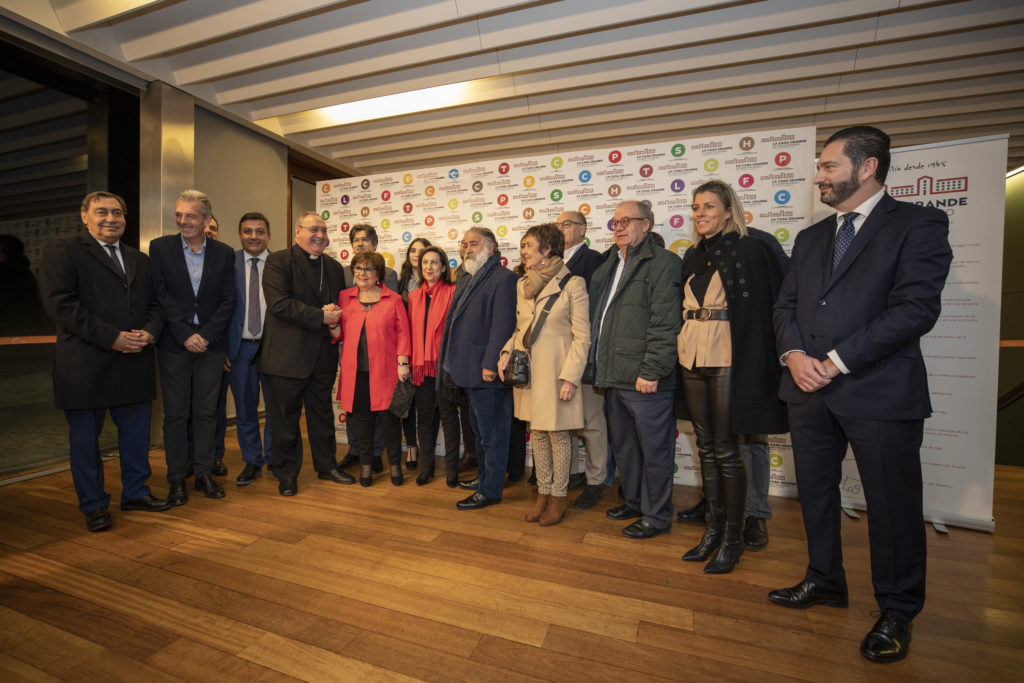
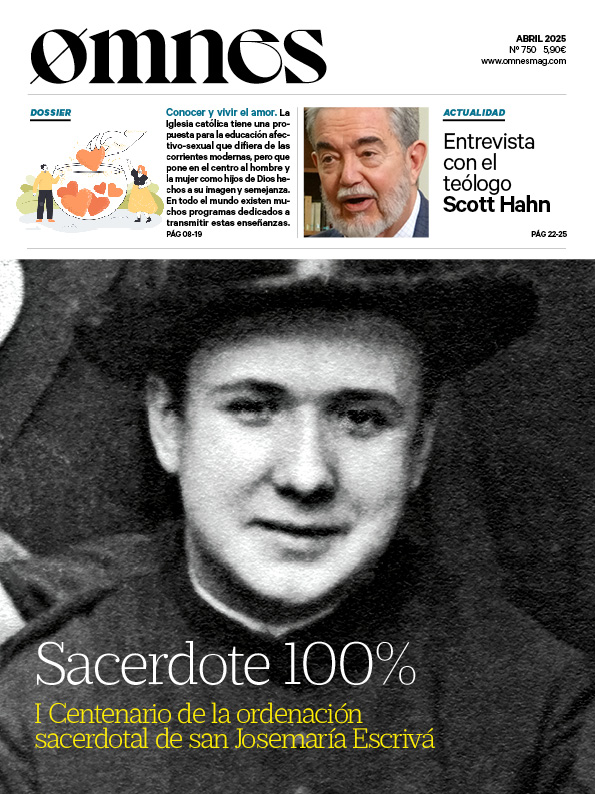


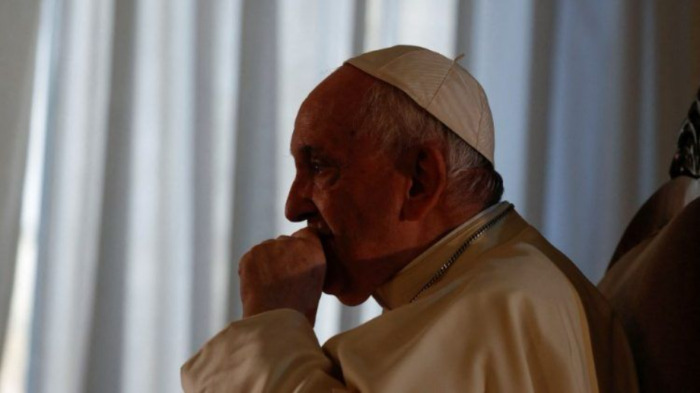
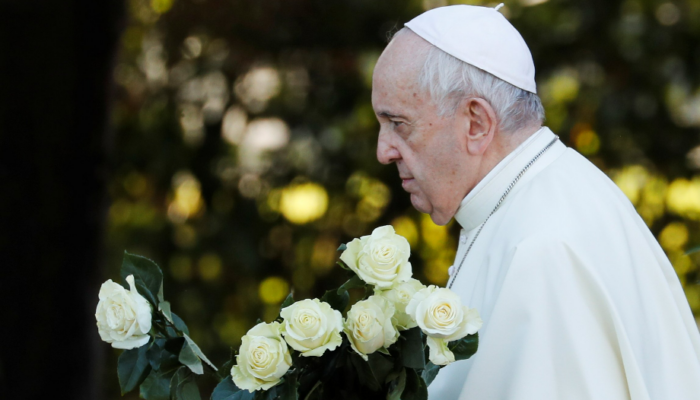
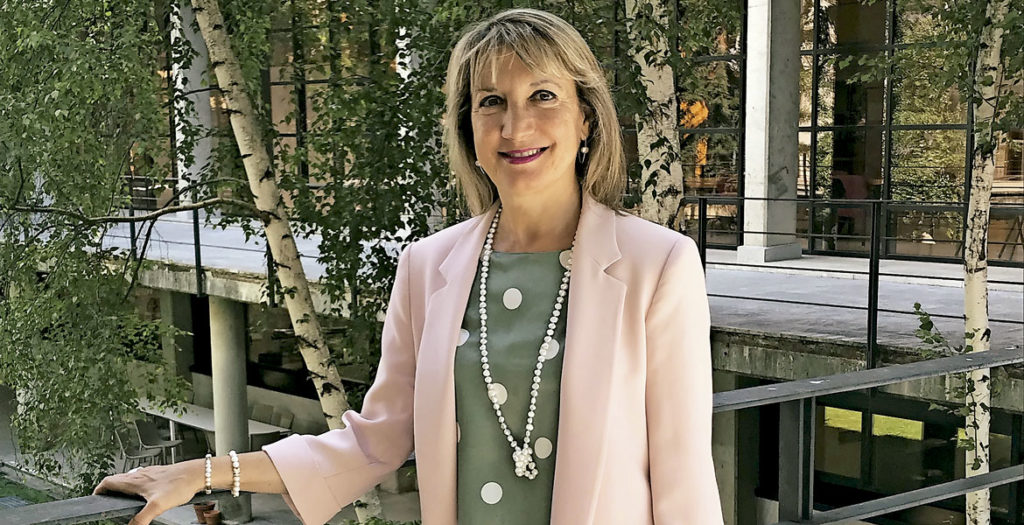
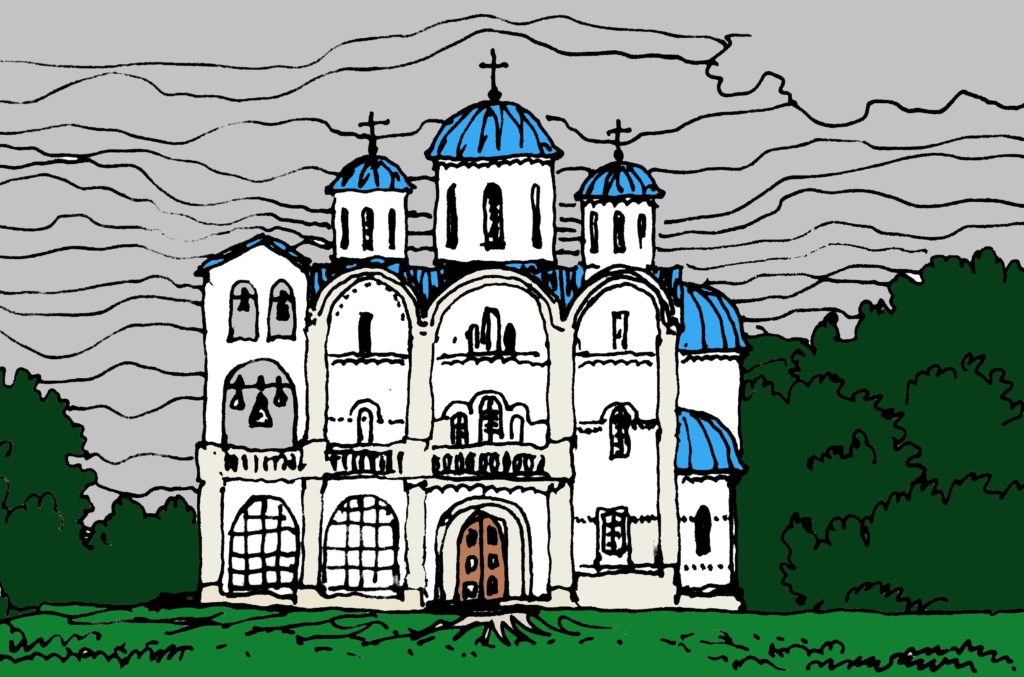
 Fatima prepares the centenary of the apparitions with prayer, penance and conversion
Fatima prepares the centenary of the apparitions with prayer, penance and conversion